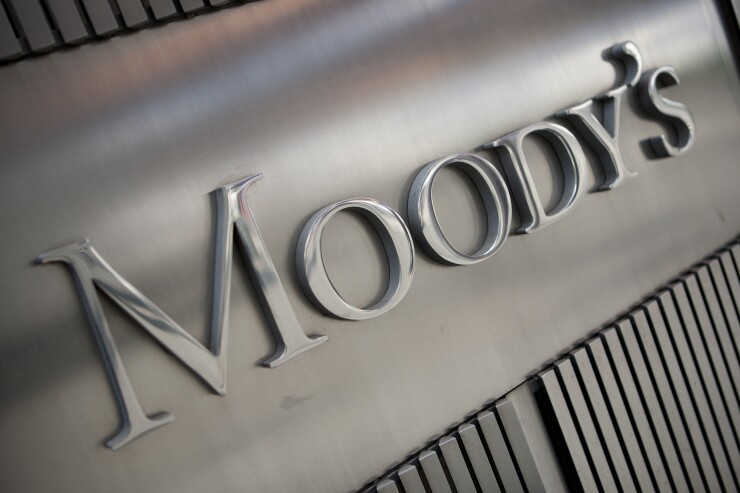A change in how Moody’s Investors Service approaches lease-backed obligation ratings resulted in downgrades to six lease-revenue bonds supporting federal leases on privately owned property.
Moody’s revised its methodology to reflect a change in its view of the overall risk in this type of bond structure after private developers refinanced $1.3 billion of debt tied to six leased properties using an amortization structure that will result in 60% to 80% of the debt being owed at the end of the term.
That means the debt, of which Moody's rates roughly $800 million, is likely to be refinanced as the properties come up for renewal, said Tim Blake, a managing director in Moody’s public finance group.
Moody’s put the debt of seven properties on review for downgrade and announced it was reviewing its methodology as it applied to federally leased properties.
“I think there will be more of these transactions, because of the investor interest that developed last year,” Blake said. “There are quite a few federal facilities that are leased, rather than owned, by the federal government.”

The new methodology isn’t likely to affect lease revenue-bonds issued by state and local governments, because their lease-revenue bonds usually employ more of a lease-to-own structure where the issuer owns the property when the bond debt is paid off, Blake said, while these federal leases involve privately developed property with long-term leases.
The change affected lease-revenue debt for four properties the Veterans Administration uses for hospitals or health clinics, a Federal Bureau of Investigation field office in San Diego, a Department of Energy property in New Mexico and a U.S. Patent and Trade office in Virginia.
All of the debt retained investment grade ratings and now has stable outlooks.
As a result of the change, the debt structure used for federal leases on privately owned property will no longer be rated by Moody’s using the notching system pegged off an issuer’s general obligation debt as a starting point.
Moody’s rates most of what it calls contingent debt — that includes lease revenue bonds, annual appropriation obligations and moral obligations — using a system that notches that debt off the issuer’s general obligation bond rating. The debt is usually rated lower than GOs, which are backed by the full faith and credit of the issuer, partly because payments on contingent debt are usually subject to annual approvals.
The update only applies to properties the federal government is leasing from a private developer backed by lease-revenue bonds that have lease renewal risk, Blake said.
“We only rate seven of these, and we changed the rating on six of the seven with the methodology change,” Blake said.
Six of the seven bonds effected by the change were refinanced last year to capitalize on low interest rates; but the refinancings structured the amortizations on the debt so that 60% to 80% would still be outstanding at the end of the lease term, making a refinancing all but certain just as the lease on the property needs to be refinanced, Blake said.
The low-interest rate environment combined with investors seeking yield created the environment for such deals. With interest rates likely to remain low into the future, more of these deals could be coming, he said.
The DOE property in Albuquerque, New Mexico was the only one that didn’t receive a downgrade.
The lease-revenue debt totaling $516 million issued by the New Hampshire conduit issuer, National Finance Authority, for four properties occupied by VA facilities in Oregon, Alabama, North Carolina and Pennsylvania received two or three-notch downgrades to Baa1 or Baa2.
The $204.1 million in lease-revenue debt issued by the California Municipal Finance Authority for the FBI property in San Diego was downgraded to Baa1 from A1. The $60 million in lease-backed floating rate bonds issued by LCOR Alexandria, LLC for the U.S. Patent and Trademark Office in Alexandria, Va. Was downgraded to A1 from Aa3.
The one not downgraded was the $60.2 million of lease-revenue debt issued by GBG LLC, an affliate of DePonte Investments, for the DOE property that houses the Sandia National Laboratory, a nuclear weapons research facility in Albuquerque, New Mexico. The lease on the property used by the federal research lab is “extremely likely” to be renewed, Moody’s analysts wrote in affirming the rating.
Correction: The article has been updated to clarify that Moody’s changed its methodology to reflect a change in its view of the overall risk in this type of bond structure, the four VA facilities included one in Pennsylvania, not Massachusetts. Blake is a managing director in Moody’s public finance group, focused on project and infrastructure finance.





